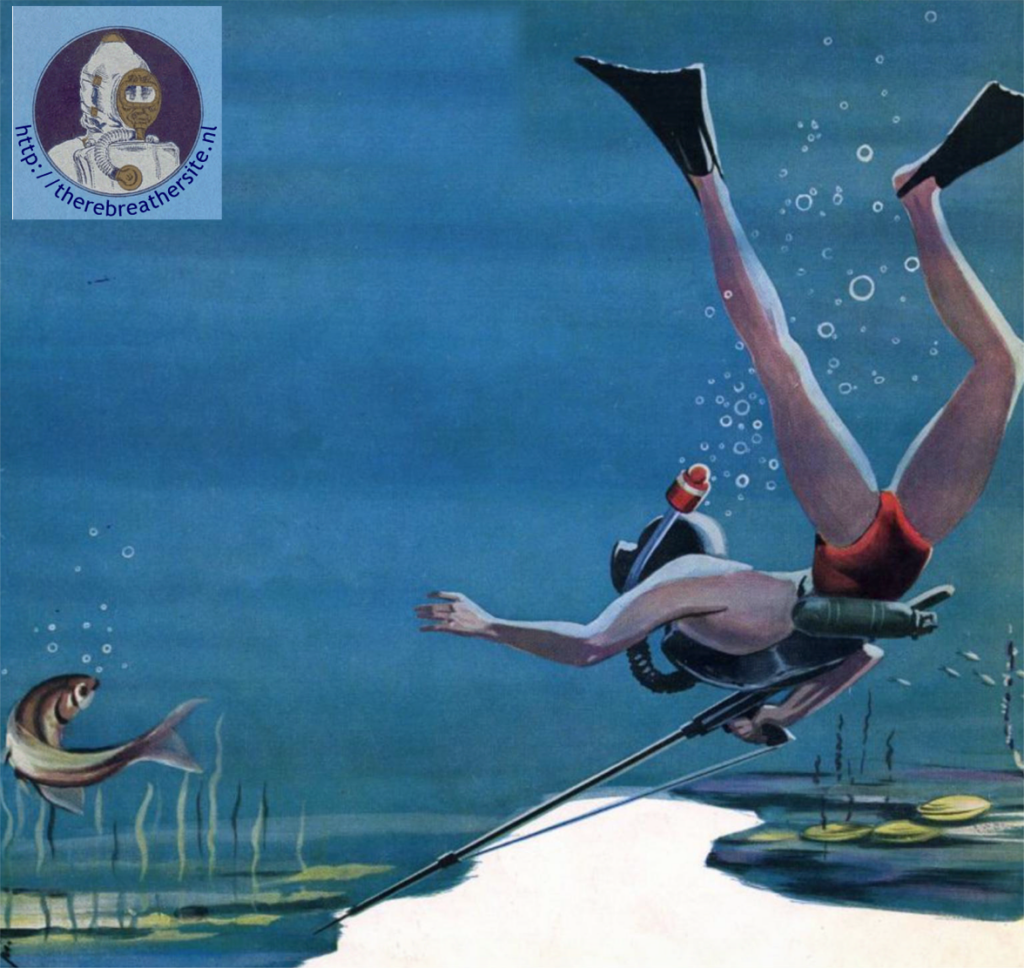

This page deals with the various design aspects of rebreathers in general. The page is a living page and can be completed with knowledge of the readers. Your contribution is therefore highly appreciated and can be added to the relevant chapter to get a more complete picture of the design criteria and different techniques used!
There are several ways in distinguishing rebreathers. During my research for the various models I found new principles every time. I think the best way to categorize them is to look at the oxygen addition method and/or how oxygen is feed into the counter lung. Beside this method one could look to the various designs of scrubbers, hoses, valves, materials, age, companies, countries, application, military or civil or both, weight, for underwater use or not for underwater use and so on. The general list in my database with the different models is based on the countries were the rigs were made. You will find the database in the top menu of this website. On this page you now find several design aspects listed with a photo attached or drawing to explain the related aspect.
The physical and medical aspect of diving rebreathers are not a part of this publication. This because it is part of every good rebreather training. There are only a few things that you should keep in your mind when diving rebreathers:
- Respect a diving depth limit of 6 meters on pure oxygen to prevent hyperoxia = dead by insult
- There is a debate if this could be 7,8 9 or even 10 meters
- The Russians dived 20 meters (many suffered an insult as well)
- Dräger published a book with an article on divers escaping a submarine from 90 meters on pure oxygen. (You would do the same if you have no choice, but not for a hobby)( Source: Stelzner, Tauchertechnik 1943)
- The 6 meter limit is considered to be safe
- Never dive an oxygen rebreather alone
- Flush the loop intensively before the dive to prevent a hypoxic loop
- Flush again every 15 minutes with oxygen, during the dive
- Only dive with certified oxygen conform medical standards
- Use fresh absorbent as described by the rebreather manufacturer
- Do not use half-fills of the scrubber
- Do not rebuild any parts of the rebreather, unless you know what you are doing
- You must know the principle of: Hypoxia – Hyperoxia – Hypercapnia – CNS – UPTD -oxygen toxicity – tables to use with oxygen -oxygen service – and most important:
- Follow a course dedicated to your apparatus
- Keep your rebreather away from grease
- Never touch parts that are in contact high pressure oxygen
- Only use oxygen compatible grease for high pressure fittings
- When diving on oxygen Use a calibrated depth gauge with a scale of 10 or 20 mtrs and not a regular model that has a lager scale upto 100 mtrs
- Always dive with a dive knife to cut yourself loose from fishing lines that are often found at these dive depths.
- Diving Semiclosed rebreathers asks for careful calculation of depth in relation to gas selection
- In order to dive with an ECCR, equipment-specific training is required!
- A rebreather has a CE mark and is tested according to European standards in Europe
- An ECCR diver can carry out his/her own first-line maintenance, but in the event of complicated malfunctions, the manufacturer must be consulted!
Below are the most important design criteria with a hyperlink to the section of the page where they are further described. Each topic has a button to return to the list below.
Main operating principles:
On demand by counter lung operated valve.
Scrubber design:
Counter lung position:
Cooling systems in rebreathers
Counterlung design
The position of the counterlung vs. W.O.B (work of breathing)
Hoses
Side mounted (fire fighting and mine rescue) (seitenschlauch)
Mouthpiece and gas routing
Mouthpiece and valves + gas direction
Bottles
What are diving cylinders made of?
Other ways of gassupply
Overpressure valves
On the lung
Position
Purpose
Weight belt
safety features
position
Special features:
Gas cooling systems
Alarm systems for low gas
Fog whiper in full face masks
Lamp on head of diver
Automatic inflator for unconscious diver
Gas switch to nitrox for deeper dives
Gas switch to trimix for even deeper dives
Communication equipment
Disposable canisters
Disposable scrubbers
Low magnetic features
Low acoustic features
Special suits for special operations.
